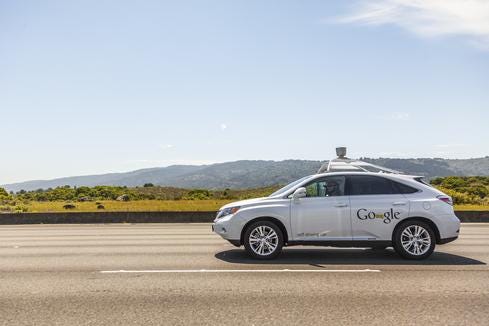Google's Self-Driving Car Busted For Driving Too SlowGoogle's Self-Driving Car Busted For Driving Too Slow
How do you ask a self-driving car if it knew how fast it was going? Google's autonomous vehicle and it operators find out the hard way in Mountain View.


Google, Tesla, Nissan: 6 Self-Driving Vehicles Cruising Our Way
Google, Tesla, Nissan: 6 Self-Driving Vehicles Cruising Our Way (Click image for larger view and slideshow.)
Google's self-driving cars have been involved in a few accidents since they have started to hit the road -- always due to real live human drivers -- but the company has chalked up a new violation in driving too slowly.
As the Mountain View Police Department noted on its blog on Nov. 12, an officer noticed traffic backing up behind a slow-moving car, which turned out to be none other than a Google autonomous car.
The officer stopped the car, which was traveling 24 mph in a 35 mph zone, and made contact with the operators to learn more about how the car was choosing speeds along certain roadways, and to educate the operators about impeding traffic.
The posting also noted the MVPD meets regularly with Google to ensure that their vehicles operate safely in the community.
Google self-driving cars operate under the Neighborhood Electric Vehicle Definition per 385.5 of the California Vehicle Code. They can only drive on roadways with speed limits at or under 35 mph, which means that the company was still in compliance with the law, according to the MVPD report.
The key to self-driving cars is software that can interpret all of a vehicle's sensors and learn to mimic the driving skills and experiences of the very best drivers.
Google is the current technology leader in this arena, according to a November 12 report from IHS Automotive that suggests the technology company has invested nearly $60 million so far in autonomous vehicle research and development, at a run rate of nearly $30 million per year.
"Google is in a unique position to leverage adjacent technologies for developing self-driving car software," Egil Juliussen, senior research director at IHS Automotive and author of the report, wrote in the report. "And its strategy and goal is to provide the software and map infrastructure to allow mobility services to anyone -- via fleets of driverless cars -- within a decade or less."
The IHS report noted that, unlike traditional vehicle manufacturers, Google has the ability to leverage adjacent technologies and experience from its other projects and investments, including robotics, drones, and related technologies that help automotive operations, such as neural networks, artificial intelligence, machine learning, and machine vision.
IHS Automotive currently forecasts that nearly 12 million self-driving and driverless cars will be sold globally in 2035, a figure that would represent around 10% of total global light vehicle sales.
Google is far from the only company making inroads in autonomous vehicles. Nissan recently announced that it has begun testing its first prototype vehicle that demonstrates piloted driving on both highway and city roads in Japan.
[Read about Apple's Project Titan.]
Over in Europe, auto giant Daimler has already hit the highway, bringing an automated series-production truck to the A8 between Denkendorf and Stuttgart airport.
A survey of around 3,000 consumers in the US, China, and Germany that was released in September by McKinsey found that consumer interest in self-driving vehicles is high, as long as drivers have the option of taking the wheel when they want to.
**New deadline of Dec. 18, 2015** Be a part of the prestigious information Elite 100! Time is running out to submit your company's application by Dec. 18, 2015. Go to our 2016 registration page: information's Elite 100 list for 2016.
About the Author
You May Also Like






